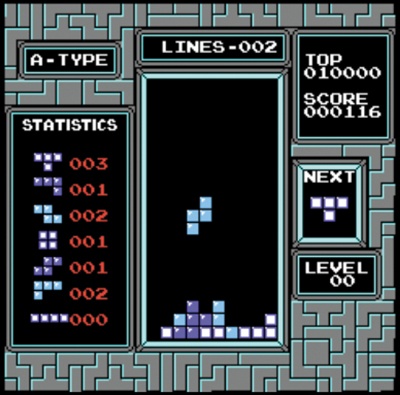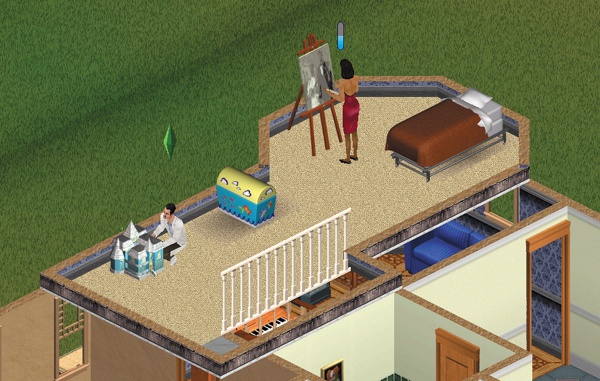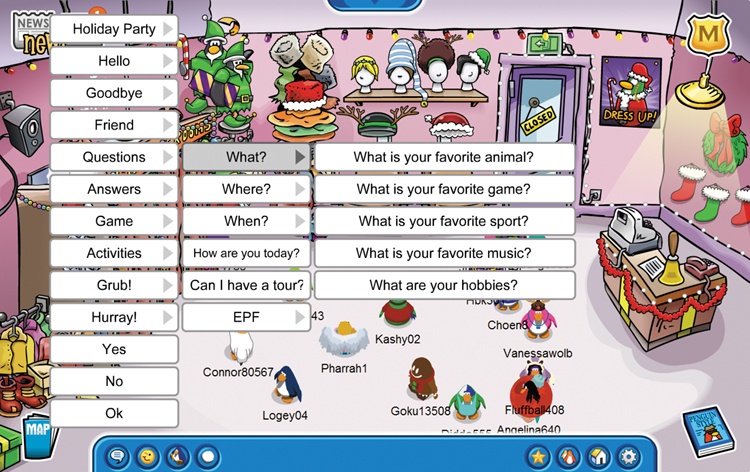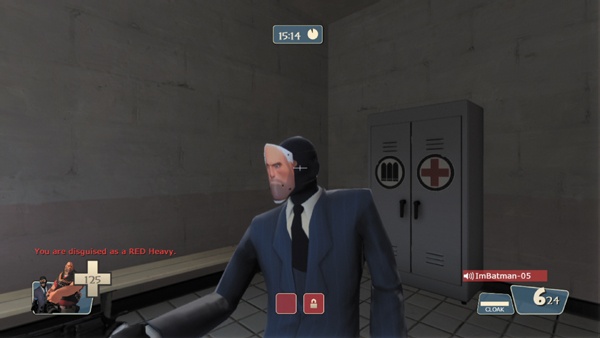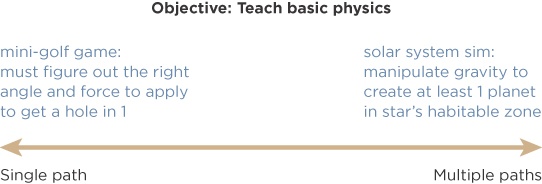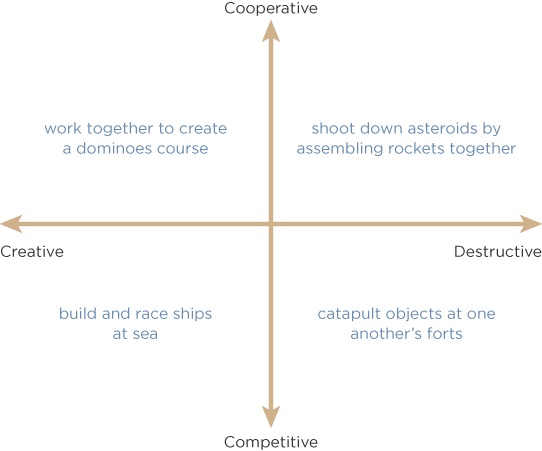I wish I could say that the hardest part of game design is just getting started. Unfortunately, design, development, testing, and promotion can also get pretty hairy. Still, developing the initial creative vision for a game is a significant hurdle to clear. Doing so successfully is the first step (of many) toward creating a great game experience. More to the point, great games cannot happen without a good vision.
This chapter encourages you to build your vision by thinking about your game from several different perspectives, and by posing questions that will help refine a budding concept into a more robust treatment with qualities conducive to good player experiences. At the end of the chapter I lay out a method for combining these perspectives in a generative fashion that will allow you to be discriminating in selecting the ideas that you believe hold the greatest potential for success.
The first question to ask is, Why do you want to create a video game? It’s important to remember that any successful game’s ultimate purpose must be to entertain its players; that’s why people invest their time in the experience. It’s possible that you have no objective beyond this, and that you view game design as a form of altruism or a means of artistic self-expression. There’s great legitimacy in such ideals, but since this book is targeted toward UX designers, I assume that most readers are working in support of external objectives, most likely driven by business needs or by social causes. Understanding these objectives means getting a handle on your personal investment in the game.
It’s also important to consider why you believe that a game is the best way to achieve your objective. Recognize that games are better suited to certain objectives, and entirely unsuited to others. Ask yourself where your objective falls on this spectrum, and what specific advantages games provide that cannot be met through other channels.
Typically, objectives fall into one of a few common categories.
For commercial video games, the designer’s objective usually is to make money. The traditional gaming market is highly saturated and dominated by a few well-resourced companies, and I’m not assuming (or advising) that UX designers try to compete in that market. But there is a growing demand for niche gaming applications among businesses, schools, government agencies, and nonprofit organizations. In these cases, your objective to generate revenue would share space with the client’s objective to achieve a different goal.
In any event, you’ll need to think through the revenue model for your game. The model may include:
Consulting fees paid by a client for the design and development of the game
Direct sales of a packaged game to players
Sales of licenses to the game to organizations that can benefit from its use
Subscriptions that allow individual players access to the game for a specific amount of time or usage
Ongoing sales of expansions to the original game
Limited free play that requires payment for additional equipment, skills, or in-game currencies
In-game advertisements
Games can be a highly effective way to elicit action in the real world, such as exercising more often and more vigorously, or adopting more fuel-efficient driving habits. In Chapter 11 I discuss how games can be designed to encourage these actions.
A substantial and rapidly growing industry is dedicated to creating games that educate and train people. I cover such applications in depth in Chapter 12.
Games can be a wonderful way to convince players to adopt a particular point of view. See Chapter 13 for a complete discussion.
The most important factor in the success of a game is how well it serves the people who play it. Creating a game that fits your potential players requires understanding who they are and why they value playing games. The usual methods that UX designers invoke to gain insight into their target users—including surveys, focus groups, interviews, ethnographic observation, and personas—are no less valuable in game design.
It’s important to consider your players across several classifications. In each case, identify the full range of remotely plausible player groups, as well as the most likely player constituencies.
How old are the players? Are more of them likely to be male or female? What’s their level of education? How well do they understand the language in which you’re writing the game? Do they have any motor, sensory, or cognitive impairments? Each of these questions will have different implications for the themes, challenges, length, and level of support provided in the game.
Why would people want to play the game? It’s not enough to say simply, “Because it’s a game.” People have a vast number of games to choose from. Why do you believe people will take an interest in your game in particular? Survey the people in your target audience about the types of games they like to play and why they enjoy them. Look for themes like those described in Chapter 4. Then consider which factors you can incorporate into your game’s design to draw the interest of players and to sustain their interest over time. Will the game appeal to people who value social interaction, puzzles, playing with language, cutting-edge graphics, or compelling story lines? How do these priorities match up with the demographics you’re targeting?
How much experience do your players have with video games? Are they people who spend dozens of hours every week in virtual worlds, or do they do a little casual gaming once or twice a week? Are you offering games to people who have had no real exposure to them before? Consider how the answers to these questions should influence the complexity of the gameplay and the controls. A design that’s too simple won’t suit hardcore gamers, but any significant complexity could completely exclude the least skilled players. Which group constitutes the larger portion of your likely audience? Are there ways to design the game so that it could appeal to a broader segment of players—such as allowing people to play at a level that’s comfortable for them?
How will people play your game? Do players have access to a personal computer? If so, what platform? How sophisticated is the hardware? Will they be playing the game in a location where they have access to the Internet? How likely are they to own a smartphone, a tablet, or a handheld gaming system, and how likely are they to carry it around? Do they have a home game console? Think about the effect that the available technology will have on the gameplay. For instance, games that require a full keyboard or a large screen can’t go mobile, but games that require continual access to the Internet work especially well on mobile platforms.
How much time do players have on their hands? How many of your players are young people with time to kill, and how many of them are older people with families and jobs that demand most of their attention? Will the game be promoted through an organization, such as a school or business, that will carve out time for people to play? If there is no such organizational accommodation, consider how much of a commitment players would be willing to make or could be persuaded to make to your game.
Every game is built around some form of conflict. Conflict is created by the relationship between what players want to achieve (the objective) and the things that stand in their way (the environmental and formal constraints). This relationship sets up the central struggle of the game and constitutes a fundamental component of the game’s design. Defining the conflict or conflicts that lie at the heart of the gameplay will guide many of the design decisions that follow.
Blackjack: Draw a higher total card value than any of your opponents without going over 21. To win, players need to understand how to play the odds and fight the compulsion to take excessive risks.
Mastermind: Deduce the color sequence created by your opponent in 12 guesses or fewer using the feedback that your opponent provides about each of your previous guesses. Players need to employ logic to win.
Frogger: Consistently time your movements from one safe spot to another until all of your frogs reach the opposite side of the screen. Players need to have quick reflexes to win.
Qix: Box out areas of the screen without allowing any part of the box you’re drawing to come into contact with the randomly moving Qix. Players need to be able to think strategically and judge spaces and distances well to win.
Dance Dance Revolution: Tap the right squares on a floor mat at the exact moment indicated on-screen, with greater accuracy than your opponents. Players need to have physical agility and a sense of rhythm to win.
How can you come up with the seed idea for the conflict of a game? Some key characteristics of the conflict examples listed in the previous section translate directly into guidelines for brainstorming.
The design of the conflict has little connection to the game’s presentation. Don’t be too concerned with your game’s look and feel, at least not right away. Many possible faces can be put on a game, and you can worry about that later.
The conflict is the central activity of the gameplay, on which players spend most their time. Decide where you would like them to devote their energy. Do you want to force players to stop and carefully puzzle through their next move as in Mastermind, or pressure them to make the next move very quickly as in Frogger?
The effect of each game is directly connected to its conflict. Imagine different effects that you would like the game to have on players. Should it pit the rational mind against the emotional mind as in blackjack, or should it promote a state of flow as in Dance Dance Revolution?
Game conflicts can draw on a broad range of human abilities. Think about the different player abilities that your game could draw on. Should it stress spatial relationships as in Qix, logical reasoning as in Mastermind, or moment-to-moment reflexes as in Frogger?
Suppose you’ve brainstormed a list of possible conflicts. How do you distinguish between the good ones and the ones that are destined to go nowhere? There are several criteria to consider.
After people get past the graphics and the story line, they’ll spend most of their time negotiating the game’s conflict. So it’s worth developing something that will make the time spent playing feel worthwhile. Much of the appeal of Tetris, for example, comes from the fact that its conflict is fundamentally interesting: fitting blocks together in the most efficient way without running out of space to manipulate them (Figure 6-1). This conflict appeals to people’s natural interest in order, geometry, and the struggle against mounting adversity. If you have a game idea, ask yourself what makes its conflict interesting.
Think about whether the conflict gives the players a fair chance of prevailing. Remember that in video game design, the system always has inherent advantages over the players because it’s the final arbiter of the rules. It’s easy for people to become frustrated with a game that’s overpowered and to perceive it as unfair. In multiplayer games, people need to feel that they have roughly equal chances relative to one another. People usually expect games to function like a meritocracy, awarding victory on the basis of an individual’s skill, cleverness, or ruthlessness. For example, games that allow players to pay for certain advantages risk violating a core value of gaming, because most people believe it’s unfair to pay to win. Ask yourself whether your game is fair to its players, and whether it fairly distributes power between opponents.
The more complex a challenge is, the greater its demands will be on the player’s attention. The conflict in chess, for example, is relatively complex. The objective to capture your opponent’s king is complicated by the constantly shifting configuration of pieces. Bocce, by contrast, is relatively simple: try to throw the colored balls as close as possible to the white ball. A complex conflict can draw players deeper into a game, but it can also be exclusionary. Compared to chess, bocce is much easier for a novice to pick up and succeed at.
The conflict needs to keep people playing for the intended duration of the game. Consider the factors that could make the experience too short-lived. Is it possible for players to completely surmount the game’s conflict too quickly, and be left with nothing to do? Does the conflict come to an end when the player finishes the game, or can players reconfigure the game and start over? Also think about whether the game could run too long. What are the chances that players will become stuck and be unable to continue? Repetitive conflicts in games, such as fighting the same enemies over and over, can grow tedious. Do you think that players could become bored and drop out of your game before completing it?
Using the information you have about the available time your players have to play, set objectives for how long the game should run. There are a few questions to consider when you’re deciding on the game’s duration and lifetime. Where you can, quantify your answers to the questions in each of the following sections in specific units of time (hours, minutes, or seconds).
What is the total duration of a concise game—that is, a game completed in the minimum number of turns by expert players?
At the other extreme, how long could it take novice players to complete the game?
Do you expect most people to fall somewhere in the middle? Are you shooting for a typical duration of play, or will it vary widely?
Is there an element of the gameplay that places a limit on how long it can run?
How long do you expect a single sitting with the game to last?
How many sittings will it take to complete the game?
Will the player be required to revisit the game frequently? For example, in Words With Friends (an online version of Scrabble), players forfeit the game if they wait more than one week to make a move.
If the game is being developed for an organization to use internally, are there desired limits on how long a single sitting should be, and how frequently people should be able to play?
If players take a long break from playing, how difficult will it be to rejoin the game and get back into the swing of things?
Perhaps the most familiar end state in a game is winning, losing, or tying against the system or other players. Ending the game in one of these states provides a feeling of completion to the experience. These states can be used in games that run for either short or long durations. They also provide a logical point at which players can decide whether to play again.
But these three states aren’t the only ways that a game can progress. Particularly with video games, there are two other common scenarios.
Some games don’t have a winning condition and instead end when the player fails in some way. This was the norm in classic arcade games like Pac-Man, Donkey Kong, and Tetris. These games needed to come to a conclusion quickly enough to draw more quarters or to allow another player the chance to play. If your game needs to be similarly short-lived, then consider a mechanic in which players are bound to lose eventually.
Some games never come to a formal end. In The Sims, for example, play doesn’t stop until the player loses interest in it (Figure 6-2). You might design for this scenario if you want to create an enduring experience for players that they can come back to over and over again indefinitely.
Figure 6-2. Players can go on playing The Sims indefinitely, as long as they keep finding interesting things to do.
Player fatigue is a factor in open-ended games. As a designer, you’ll need to develop ways to sustain interest in the game over time. For example, you could introduce new quests or expand the game environment, but such approaches can become burdensome. See Chapter 10 for a discussion of reward systems that can help keep people engaged in the experience.
Also consider how feasible it will be for your target audience to engage in your game on an ongoing basis, given their lifestyle. If sustained engagement is feasible, then focus on why players might feel motivated to return to the game. For players of The Sims, the motivation is the opportunity to create new homes and people to live in them. For players of World of Warcraft, it’s the feeling of competence gained by completing quests and leveling up. In CityVille, it’s the shared social experience with friends.
Many games prescribe a single path through the experience, presenting their challenges in a sequence that varies very little or not at all from one player to another. The advantage of the single path is that it gives you, the designer, greater control over how the gameplay unfolds. At every point you know what the player has already encountered and what is yet to come. And because there is a controlled set of use cases and test cases, development may also be simpler.
However, games that offer only a single path also reduce the players’ freedom. If the feeling of autonomy is an important motivation for your players, they might find such a game overly limiting. Very linear games also sacrifice some replay value, because after a single pass the player has already seen everything there is to see.
Some games allow players to proceed through events in any order they wish. The Sims, for example, does not prescribe any sequence in which things must happen. As a result, the game is filled with a sense of personal freedom, and no limits are placed on its replay value.
Absolute nonlinearity can be difficult to achieve in any game that has a formal ending. The Grand Theft Auto games, for example, are in one sense very nonlinear because they allow players to go anywhere they like, anytime they like, in a massive virtual world. But these games also contain linear narratives that consist of a sequence of events culminating in a finale. Instead of pursuing nonlinearity to a fault, many games offer multiple paths to completion that are varied but nonetheless finite.
Multiplayer games are wonderful for organizations like businesses and schools, where they can promote collaboration and where the designer can be assured of an installed base of players. If you’re brainstorming a multiplayer game, there are several dimensions that will define the experience. Incidentally, many of these apply also to games played with virtual characters, or to the machine itself in a single-player game.
How many people will be interacting in the game at once? Different numbers of players have different social effects.
Two-player games unfold like conversations between individuals, creating an intimate sense of a communal experience. Both players must be very engaged in the experience for the gameplay to succeed.
Games played with small groups in which each player acts independently, such as poker, create both interactions between individuals and interactions with the whole group. There is enough room for players to have differing levels of engagement in the game, but not so much that individuals can go unnoticed.
Breaking small groups into small teams promotes connectedness within the teams, as they learn how to work together against shared rivals. People can also play differentiated roles within a group, which can invite more inclusive participation. Children, for example, can play alongside adults without feeling that they’re at a disadvantage.
Games played with large groups, such as football, usually need team structures to keep the gameplay organized. Cooperation between individuals is then inherent in play. Some players can be less engaged without causing the game to fail, although team dynamics create pressures for everyone to participate.
Massively multiplayer games, such as World of Warcraft, can contain any of the structures just described. Individuals are very free to play at any level of engagement that’s appropriate for them, and they can go through phases of greater and lesser participation.
Where will players physically be located relative to one another, and how will their proximity affect the gameplay?
A shared physical space like a living room has important implications for play, because much of the experience will happen outside the borders of the game world. When people play together in a shared space, they taunt one another, joke around, high-five, obstruct each other’s view, yell, scream, and cheer. Meaningful moments in the game are magnified, as when one player suddenly leaps ahead of another or makes a mistake and ends up at a disadvantage. The more of these moments the game offers, the greater the effect it will have in a shared space.
Also think about how the game’s display will support multiple players in a single space. Sharing a computer screen and playing “pass the mouse” makes for a pretty lousy experience. Instead, is it feasible for all players to have their own display, perhaps using multiple laptops or mobile devices? Would players share a split screen, or would the game’s display allow multiple players to use the same screen at the same time? How would that work, and how would individual players be able to tell what they personally were affecting?
Since the late 1990s, more and more people have experienced video games through online play. The online environment removes a lot of ambiguity from game design because players have their own display and controls. It can also be very convenient for players because they don’t need to jump into a car and drive across town to play a game with their friends. Players miss out on the nonverbal language and rich personal interaction of a shared space, but the convenience of remote play also means that more people can play together more often.
Will players be able to interact with one another in real time?
In online games like Unreal and World of Warcraft, players interact in real time. Real-time interaction allows events to develop quickly, lets players react to one another’s actions immediately, and enables a large number of player-to-player interactions at any given time. These interactions are very conversational, contributing to the players’ feeling that they’re participating in an active community. However, real-time interaction works only if many players are logged in at the same time, so synchronous multiplayer games lend themselves to configurations that maximize the number of players available at any particular time. This may mean allowing lots of players to participate at once, or allowing strangers to interact with one another.
In some games, players make their respective contributions to the game asynchronously, taking actions as their time allows. Their moves are then stored on a central server until other players can go in and check them, also at their own convenience. Asynchronous play has the great advantage of not requiring players to schedule time to play together, and it lends itself to play among small circles of friends. Interactions between players must be fairly simple and involve small numbers of moves; asynchronous play doesn’t work well for fighting pitched battles or for anything that unfolds in the moment.
Will players already be known to one another outside of the game?
Many players feel more comfortable playing a game with people they know. You may prefer to allow people to play only with friends from work, school, Facebook, or their personal address books, especially if some players could be children.
A large number of highly successful commercial games pair players with complete strangers online. For many players, the opportunity to meet new people through a game is a major part of the appeal of online play. Furthermore, allowing open association broadens the pool of potential players immensely, making it much more likely that enough people are in the game at any one time to sustain the experience. Concerns about safety can be mitigated if people have limited means of direct communication with one another as in Club Penguin, Disney’s virtual community for kids, which allows players to communicate only through canned phrases (Figure 6-3).
How do you want players to relate to one another in the game?
Competitive games drive everyone toward greater skill and effort, and they encourage players to size up one another’s strategies. Players need to dive into one another’s psychology and exploit the weaknesses they believe they have identified there. They keep secrets, bluff, obfuscate, hide, and otherwise employ trickery to win. Think about whether these qualities would complement the design of your game.
In some contexts (for example, a workplace or charitable organization), you might assume that putting players in a competitive stance would be thematically unpalatable. But keep in mind that the shared experience of play tends to bring people together.
Cooperative play creates a very different kind of experience. To succeed, players must build a relational culture between one another that is based on how they can work together. Doing this means understanding each other’s skills, developing a shared set of dependable routines, and creating a specialized vocabulary for communicating within the game. By living the practice of sharing, trusting, aiding, and leading, cooperative games can generate strong bonds between players.
In some games, players neither compete against nor cooperate with one another, but are merely present in the game at the same time. In Animal Crossing, for example, players can visit one another’s cities, see how they’ve decorated their houses, and leave messages for one another (Figure 6-4). The point of the multiplayer model here is to facilitate a social experience and foster a sense of community, not to advance the gameplay.
It can be fun to have both cooperative and competitive stances between players. In Team Fortress 2, players operate cooperatively on either the red team or the blue team, and the two teams compete against each other in battle. In a clever twist on these stances, players may take on the role of a spy and disguise themselves as members of the opposing team (Figure 6-5). Enemy medics may actually be tricked into healing a spy, who is only there to wreak havoc on the enemy team.
Will all players stand on an equal footing in the game?
In most games, players start out with roughly equivalent amounts of power. This balance gives a game a sense of fairness and makes it an unbiased arbiter of who has the greater skill. Battleship, chess, and Pong are examples of games in which the assigned roles of the players and the power they have are completely symmetrical.
Not all games need to specify the same role for all players, or grant them the same amount of power. Hangman is an asymmetrical game, for example, because the two people play completely different roles. In Dungeons & Dragons, one player serves as the dungeon master and the other players are the denizens of the dungeon master’s world. Baseball has many asymmetrical elements, as when the batter faces off against nine other players, each of whom has a very different role on the field.
Considering how the established game genres could support your objectives can be a helpful way to generate design concepts. Each genre has distinct characteristics that lend themselves to particular modes of play and engagement, which in turn create different advantages for design. For example, the complex and cognitively demanding character of strategy games could work well for a game intended to educate players about the basic principles of natural selection.
Table 6-1 lists game genres that may be relevant to designs intended to achieve broader objectives in the real world. Select several from the list, and ask yourself how each might suit your objective and the motivations of your target audience. Can you visualize the game through the lens of that genre? Keep in mind, too, that one of the most exciting attributes of video games is that they often transcend genre and reinvent traditional forms of play. Games like Katamari Damacy and Angry Birds have been very successful doing things that had never been done before. Wonderful things can happen when you mash different genres together or explore the gaps that lie between them.
Throughout this chapter, I’ve suggested several discrete questions that can spark different ideas for a game. You can make your brainstorming more productive by considering several of these factors at once, and by exploring the designs that could result when you juxtapose them in different ways. By focusing less on the quality of any individual idea and more on the total volume of ideas, you give yourself the advantage of selecting and combining the most promising ideas from many potential designs.[30]
Many of the game characteristics discussed in this chapter can be thought of as opposing values on a spectrum. You can generate concepts by imagining what shape the game would take at each end of these spectra.
Table 6-1. Game Genres Compared
Characteristics | Examples | |
|---|---|---|
Platformer | Reflexive Light narrative Lengthy | LittleBigPlanet Ratchet & Clank Super Mario Bros. |
Role-playing games | Strategic and reflexive Deep narrative Very lengthy | Final Fantasy Mass Effect World of Warcraft |
Action/arcade | Reflexive Fast-paced Usually short | Galaga Geometry Wars Pac-Man |
Strategy | Strategic and tactical Complex Cognitively demanding | Age of Empires Plants vs. Zombies Total War |
First-person shooter | Reflexive Intense Cathartic | Call of Duty Halo Resistance |
Puzzle | Toylike Cognitively demanding Usually short | Bejeweled Bust-a-Move Tetris |
Open world | Self-paced Invites exploration Lengthy | Grand Theft Auto Infamous L.A. Noire |
Rhythm | Reflexive Often physical Short | Dance Dance Revolution Guitar Hero Rock Band |
Simulation | Semblance of realism Invites experimentation Invites creativity | FarmVille SimCity The Sims |
Virtual pet | Endearing Invites creativity Lengthy | Animal Crossing EyePet Nintendogs |
Exergames | Physical Goal-oriented Somewhat short | EA Sports Active Wii Fit Your Shape: Fitness Evolved |
Adventure | Cognitive Invites exploration Atmospheric | King’s Quest Myst Zork |
Brain games | Cognitive Goal-oriented Repetitive | Big Brain Academy Brain Age Lumosity |
Social networking games | Communal Continual Viral | CityVille Empires & Allies Words With Friends |
Alternate reality games | Linked to real life Multimedia Collective | The Beast I Love Bees Why So Serious |
Luck versus skill
Reflexive versus strategic
Virtual versus physical
Experimental versus precise
Creative versus destructive
Cooperative versus competitive
Synchronous versus asynchronous
Shared space versus remote
Symmetrical roles versus asymmetrical roles
Friend-based versus open association
For example, suppose that your objective is to teach tenth-graders basic physics and you choose to generate concepts using the “single path versus multiple paths” spectrum (Figure 6-6). At the single path end, the result might be a puzzle game based on miniature golf in which the player always needs to get a hole in one, and for each hole the player must determine the correct angle of the putt and the amount of force to apply to successfully get the ball through the obstacles.
At the multiple paths end of the spectrum, you might imagine a simulation game in which players construct solar systems from an interstellar cloud by creating gravity wells into which gases and rubble may coalesce into stars and planets. The objective might be to end up with at least one planet orbiting at a distance from a star where it would be hospitable to the formation of life.
Figure 6-6. Considering how a game would be designed at opposite ends of a spectrum can spark ideas for design.
After generating as many ideas for games as you can using one spectrum, move on to another one. What games can you envision that would require players to take reflexive actions in the moment, or to think through long-term strategic decisions in advance? What shape would the game take as a single-player experience versus a multiplayer experience? If the game were multiplayer, how might it work if the players went head-to-head in synchronous play or if they took turns asynchronously?
Another productive way to experiment with spectra is to take two at a time and put them in a 2×2 grid that gives you four quadrants representing different combinations of characteristics around which you can brainstorm ideas.
If you want to create a game based on physics, for example, you might use the grid to come up with the four ideas illustrated in Figure 6-7:
Creative/cooperative. All players need to work together to figure out how to complete a partial course of virtual dominoes to be knocked down. At some points they need to make a domino swing across a rope or set off a cannon to propel a domino across the course.
Creative/competitive. Each player needs to build a ship from dozens of interchangeable parts, each of which has some positive attributes, like thrust and buoyancy, as well as negative attributes, like weight and drag. Players then race their ships against one another.
Destructive/cooperative. Two players need to launch rockets filled with debris to destroy asteroids of different masses hurtling toward the Earth, without running out of debris or fuel. One player is responsible for determining the mass of the debris for each launch; the other player is responsible for determining how much fuel to use to accelerate the debris.
Destructive/competitive. Two players take turns trying to destroy one another’s forts using catapults and trebuchets. Each one has objects of different masses to hurl at one another and must select the launch vehicle, its position, and the angle of each throw.
The methods I promote in this chapter will help you generate a variety of game concepts and then think through their designs. At some point you’ll need to select the best ones to pursue. Remember that your first priority is to create a game that will provide a meaningful experience for its players. Your first question should be whether you believe the game will be fun, interesting, and rewarding to play, because these qualities will bear the greatest influence on the game’s success.
[30] This section is heavily influenced by Leah Buley’s discussion of generative design methods. Expect to see it covered in greater detail in her book UX Team of One, due out from Rosenfeld Media in 2012 (![]() rosenfeldmedia.com/books/ux-team-of-one).
rosenfeldmedia.com/books/ux-team-of-one).

